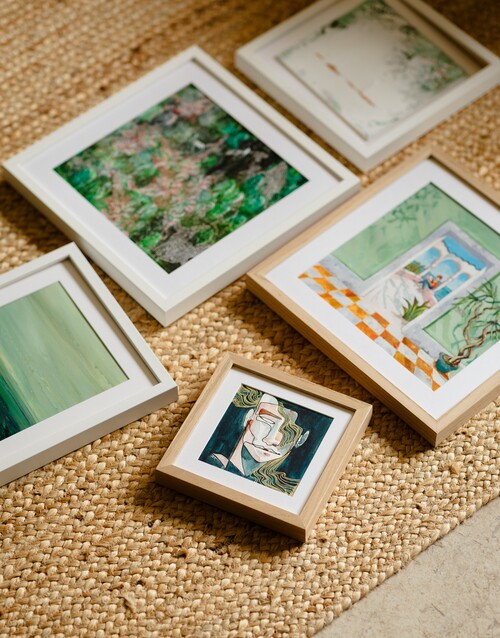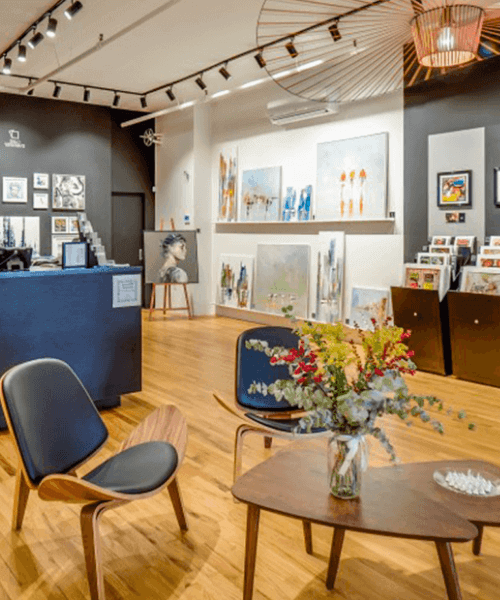The certificate of authenticity of an artwork
Buying a work of art does not come without a certificate of authenticity.
This document, which guarantees the authenticity of the artpiece, is usually issued by the artist or the gallery representing them.
To ensure the traceability of the object, the certificate of authenticity specifies the artist's name, the title, and the characteristics of the work.
For insurance or resale purposes, this identification document can be essential.
Summary
- What is the purpose of a certificate of authenticity for a work of art?
- Who can issue a certificate of authenticity for a work of art?
- What information must be included in a certificate of authenticity for a work of art?
- Certificate of authenticity: The specific case of sculptures and photographic art
- How are certificates of authenticity for works of art secured?
- Certificate of authenticity for a work of art: What does French law say?
What is the certificate of authenticity of an artwork used for?
The certificate of authenticity is the document guaranteeing that the work has been produced by the artist with whom it is associated.
Written in a single copy, this passport, attesting to the authorship of a creation, may prove to be essential when selling or insuring the work. Like an identity card, the certificate of authenticity follows works throughout their life, from purchase to resale.
Who can issue a certificate of authenticity for an artwork?
The certificate of authenticity of a work of art (certificate of authenticity or COA) can be issued by:
- the artist himself;
- the artist's heirs;
- an auctioneer;
- an online or physical art gallery;
- an art dealer;
- an art market professional (expert, scholar, art historian).
What information must the certificate of authenticity of an artwork of art include?
When purchasing a work of art or collector's item, the artist or gallery provides a certificate of authenticity.
To ensure the traceability of the work, the following information appear on the Carre d'artistes certificate of authenticity:
- the artist's name;
- the title of the work;
- the technique and materials used (paint (acrylic paint, watercolor, oil paint, etc.);
- an official stamp.
Certain optional information may provide additional information. The certificate of authenticity will then also include:
- the location of the artist's signature;
- a photo of the artwork;
- dimensions or format;
- description of the support (canvas, wood, paper, etc.);
- the date of creation;
- the identification number for works that are part of a series;
- the number of copies made of works from a limited edition print (fine art photos, for example);
- the date of issue of the certificate;
- the professional numbers of the artist or the art gallery (Maison des Artistes, AGESSA, SIRET, SIREN, etc.).
.jpg)

Certificate of authenticity: The specific case of sculptures and photographic art
In terms of photo prints, the following are eligible for a certificate of authenticity as a work of art:
- Signed and numbered prints, limited to a maximum of 30 copies (across any format and medium combined);
- Prints made by the artist or under their control.
In terms of sculpture, only works reproduced a maximum of eight times from a single mold can benefit from the status of original artwork.
both cases, the number of copies made will appear on the certificate of authenticity.
How are certificates of authenticity for works of art secured?
To secure the authentication of a work of art, its certificate must be tamper-proof. For this reason, many certificates of authenticity are issued on watermarked paper or include security elements such as a seal, an electronic chip, a secure code, or a QR code.
Certificate of authenticity for a work of art: What does French law say?
The certificate of authenticity of a work of art is governed by Decree No. 81-255 of March 3, 1981, on the suppression of fraud in transactions involving works of art and collectibles.
This regulation, also known as the Marcus decree, sets standards for the authentication of artworks or objects of art. Let’s take a closer look at them.
Responsibility of sellers
On accordance with Article 1 of the Marcus Decree, sellers of works of art or collectibles must provide the buyer with any document containing the specifications outlined during the sale. This could be:
- an invoice;
- a receipt;
- a sales slip;
- an extract from the minutes of the public sale.
The document must include certain information, such as the nature of the artwork (painting, sculpture, photograph, etc.), its composition, its origin and its age.
Contravening the provisions of this decree engages the seller's liability (professionals, experts and specialists, etc.) and exposes him to the penalties provided for for fifth class contraventions.
The degree of authenticity according to the Marcus decree
Articles 3 to 7 of Decree No. 81-255 of March 3, 1981, provide details on the definition of the author of the work of art.
Depending on the degree of authenticity of the work, the formulas used by the seller may include:
- "Work of", "by" or "signed by": These three statements guarantee that the work is authentic and was executed by the artist indicated (Article 3).
- "Assigned to": This term reflects doubt about the exact attribution of the work. The artist could be the one nominated, but it is not certain (Article 4).
- "Workshop of": This phrase indicates that the work or object was made in the studio of the cited artist or under their direction (Article 5).
- "School of": This formula indicates that the author of the work was a student of the cited artist. The work must have been produced during the artist's lifetime or within fifty years after their death (Article 6).
- "Like", "after", "in the style of", "after the manner of", etc.: These expressions do not provide any guarantee of the authenticity of the work with respect to the period, the identity of the artist, or the school (Article 7).
These formulas are used to describe works in auction catalogs, presentation sheets, invoices, or certificates of authenticity.
Contemporary articles on the subject:
How to choose an artwork?
Find out more :
- Choosing a contemporary artwork
- Choosing a modern artwork
- The price of an artwork
- The signature artwork



